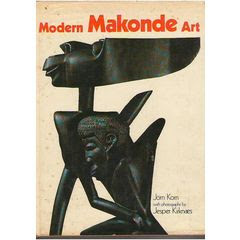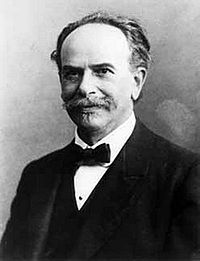IS IT HIM?
Trivial Art Tribal Art = TA-TA
Let's Talk Makonde
Above, look at the scarification tattoos and the teeth chiseling!
Sometimes in the beginning of this year – 2008 – I got a visit. The sculptor Mathias Nampoka was
my guest. He is the son of the sculptor Everist Nampoka. While he was looking in the book
Makonde written by Jesper Kirknaes, I asked him if some of the sculptors described in the book are
still living. (the book was written in sixties or seventies). See the filed teeth and scarification
tattoos.
Nafasi Mpagua at his metal hut in Kibaha
“Yes”, answered Mathias. “I know Nafasi Mpagua”. He is not living far from me in Kibaha. He is
alone, his family left him. He might be 80 years old. He used to come to me to ask for some money.
I give him sometimes 1000 or 2000 Tsh (ca $1)”.
Some hours after our meeting Mathias Nampoka called me: “Daniel, come!. Nafasi has fever and I
don´t know how long he will live”.
Nafasi Mpagua talking to Tanzanian Minister of the Culture in May 2007
I came next day. I took photos. I made short interview. Though his health was not well he carved a
sculpture for me. He doesn´t see well. He was living in a metal hut. And rightly – he was alone.
Many people doubt that he is still living. I can only say that the tattoos on his face correspond to
those in the book of Jesper Kirknaes. Jesper Kirknaes agreed that it was Nafasi Magua when I
showed him ca 20 photos. Also Nafasi Mpagua was at the exhibition in Tanzania last year 2007 in
May. He was captured by one photographer while talking to Minister of Culture.
Peter Kalulu
Champion Peter Kalulu is born in Mosambique, the exact year is not known. In 1959 he moved to
Tanga in Northern Tanzania. He says that he studied the primary school in Dar es Salaam.
There he started to carve also. But he didn´t join Nyumba ya Sanaa (House of Culture), on the other
hand he relied on himself and is quite unknown for public. Maybe because his main business
partner comes from China (Professor Lee) and much of his work is exported to China. In the
beginning of his carrier he joined different art groups in Mbagala, part of Dar es Salaam. Some of
these groups were “Banda la tatu”, “Twende pammoja” or “Ngapa”.
He carves very big sculptures,4-5 meters long which is maybe the highest in East Africa
photo below
Nafasi Mpagua asks me to find Mr. Kingdon while looking at the book "Makonde"
below
Jesper Kirknaes is author of many books on Makonde art and has extensively documented history
of Tingatinga painters. He is said to provide his photo of ujamaa carving for the 2000 Tsh
tanzanian banknote. He has together with her wife Birthe Kirknaes met with Edward Saidi
Tingatinga when it (Tingatinga) all started. I was happy to receive them personally at the gallery
Kirknaes Bookcover on Modern Makonde Art
Q:Coote, Jeremy. "Modern Makonde carving: the origins and development of a new African art
tradition," pp. 13-22. In: Wooden sculpture from East Africa from the Malde collection; [exhibition,
Museum of Modern Art, Oxford, April 2-May 21, 1989]. Oxford: Mu
Modern Makonde art derives from the Makonde people living on the plateau south of the Ruvuma
river in Mozambique (rather than from the Tanzanian Makonde). They migrated north into Tanzania
and entered into the curio trade that began to emerge in the 1950s and 1960s in Dar es Salaam and
Mtwara. Their new sculptural forms grew naturally out of older traditions of woodcarving (again,
unlike the Tanzanian Makonde, who had no real carving tradition). Modern Makonde sculptures
range from curios of the airport variety to truly fine sculptures of imagination and artistry, but the
reality of their production for commerical purposes is one that cannot be ignored.
Coote discusses the materials, techniques, styles and genres. In addition to traditional carving
(especially masks with typical Makonde scarification), there are three identifiable modern styles --
binadamu, ujamaa, and shetani -- which correspond perfectly with the characteristics sought by
Western art consumers of "erotic" art: a move to naturalism, giganticism and grotesqueness. Shetani
sculptures were once thought to be the invention of one man, but Coote clarifies the story and adds
refuting evidence from the Malde collection that this is not so.
Q:Art Makonde: tradition et modernité. [Paris]: Ministère des affaires etrangères, Secretariat
d'état aux relations culturelles internationales, Association française d'action artistique; Ministère
de la coopération et du développement, [1989]. 209pp. illus. (pt. color), bibliog. Text in French and
Portuguese. NB1097.6.M6A78 1989 AFA. OCLC 20964411.
Makonde sculpture, old and modern, represents an artistic tradition which evolved in response to
the historical and economic forces affecting the Makonde people throughout the twentieth century,
especially after the 1930s. It is a story which unfolds in reverse chronology from the contemporary
internationally known modern Makonde sculpture to its historical and cultural antecedents about
which less has been written or is known.
This exhibition in Paris embraces all aspects of the Makonde story. Of the six individual essays, one
deals specifically with modern Makonde sculpture: that by Elisabeth Grohs, "Art Makonde
contemporain = Arte Makonde contemporânea," (pp. 144-157). Grohs avers that the evolution of
what we recognize as modern Makonde sculpture dates to the 1930s when the first exhibition was
held at Centro Cultural dos Novos in Mozambique.
However, it was in Tanzania, where many Mozambique Makonde had emigrated in search for work,
that interest in their sculpture as a commodity arose. The Indian merchant Peera was instrumental in
encouraging this development. Using the hard wood mpingo (Dalbergia Melanoxylon), Manguli
Istiwawo, Pajume Allale, Roberto Jacobs, and others carved in what has become known as the
1"tree of life" or ujamaa(mother & child or family-story tree!M) style.
2 The "shetani" (or Devil,
mocking and crazy figures M )style originated with Samaki,
3 (, I do believe there was a third style too! Style ? M)
but was quickly imitated and soon became a popular and successful commodity in
the markets of Dar es Salaam and Nairobi. Following independence in Mozambique in 1975,
official recognition on the part of the government has further encouraged this modern tradition of
sculpture.
In my collection i have an almost exact Lipiko (Lipoko) or Portray mask. These masks were worn at certain
ceremonials and seen as ancestors, children were initiated in the story behind the ancestor
portrayed. They were worn upon the head because the head doesn't fit in it. Also did I notice that
they sometimes were seen as an ancestor shrine, just as a portray not so much as a mask. I wonder if
these type of masks were like the bell masks -thus bigger than they are now- of the Sande society in
Sierra Leone.The exact meaning of the thunder striking tattoos -as I call them is- to me unknown!
(any suggestions?) The scarification tattoos were probably a signification of one's status and
background, locality, family.involved scratching-marks, M.
Q; Wiki:etching, burning / branding, or superficially cutting designs, pictures, or words into the skin
as a permanent body modification.[1] In the process of body scarification, scars are formed by
cutting or branding the skin by varying methods. Scarification is sometimes called cicatrization
(from the French equivalent)
Sepik river initiation , crocodile scarifications.
Click on the picture for the article.
With Ctrl+ you can read this fine article on Makonde art and it's beauty concept by A.M.Rohrer.
A Host of Devils: The History and Context of
the Making of Makonde Spirit ...Click Here!!
By Zachary Kingdon
Lipoko Mask similar to the one in my collection M
Often human hair is applied to it.
In this book the meaning of words like Shetani and Ujamaa is being
approached. Also the myths and legends are being discussed as well some of the issues on
scarifications. You can ad the book to google mail docs and than read it online.
In my collection I have a hunter with a spear an oversized head with scarifications and
amuletpouches. Was it common in Tanzania and Mozambique too that these hunters were also
storytellers and whitch-hunters sec medicineman?
Photo of Makonde scarifications by S.McSwiggan pict5
Madrason at TaTa jan 2013
Comment:
no1 the Zimbabwan artist
no2 Dancing spirit
no3 Playing children
Greetings,
How are you?It is with great honor that i write to you this invitation
letter.We are a group of artists in Zimbabwe -Africa.
We recently made a short video of stone sculpture in Zimbabwe.The
project was entitled 'faces and places'.
We are inviting you to visit our sculpture park which is arguably the
largest in Zimbabwe if not southern africa.
We are currently developing a site for what transpired during the project.
You can check
http://www.palassart.com/?page_id=53
We have written a book called 'stone diary' volume 1 about the
artistic activities at the park.
Our sculpture park houses more than 200 artists.All of us are eager to
receive you at our center.We will take take you through the entire
gamut of value chain from the mines where we get the raw stones to the
national gallery where some master pieces reside.The types of stones
are ,inter alia ,
Opal stone/Lemon Opal stone
Serpentine
Fruit serpentine.
Green serpentine
Black Serpenitne
Springstone
Verdite / Golden Verdite
To this extent ,we are inviting you to our center so that you can be
acquainted first hand with our work.
Accommodation and food is free. is free.
Please accept our invitation.
Yours faithfully ,
How are you?It is with great honor that i write to you this invitation
letter.We are a group of artists in Zimbabwe -Africa.
We recently made a short video of stone sculpture in Zimbabwe.The
project was entitled 'faces and places'.
We are inviting you to visit our sculpture park which is arguably the
largest in Zimbabwe if not southern africa.
We are currently developing a site for what transpired during the project.
You can check
http://www.palassart.com/?page_id=53
We have written a book called 'stone diary' volume 1 about the
artistic activities at the park.
Our sculpture park houses more than 200 artists.All of us are eager to
receive you at our center.We will take take you through the entire
gamut of value chain from the mines where we get the raw stones to the
national gallery where some master pieces reside.The types of stones
are ,inter alia ,
Opal stone/Lemon Opal stone
Serpentine
Fruit serpentine.
Green serpentine
Black Serpenitne
Springstone
Verdite / Golden Verdite
To this extent ,we are inviting you to our center so that you can be
acquainted first hand with our work.
Accommodation and food is free. is free.
Please accept our invitation.
Yours faithfully ,























